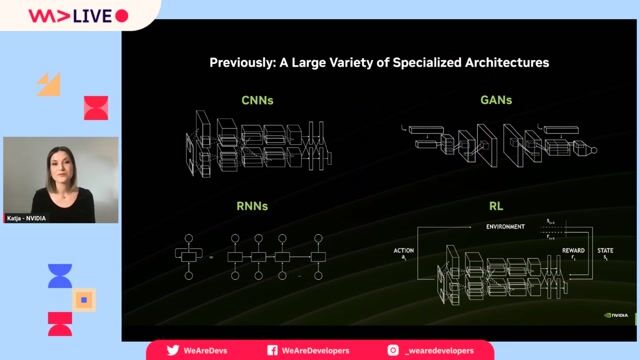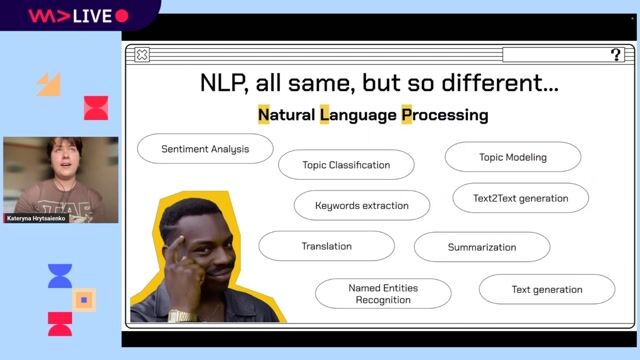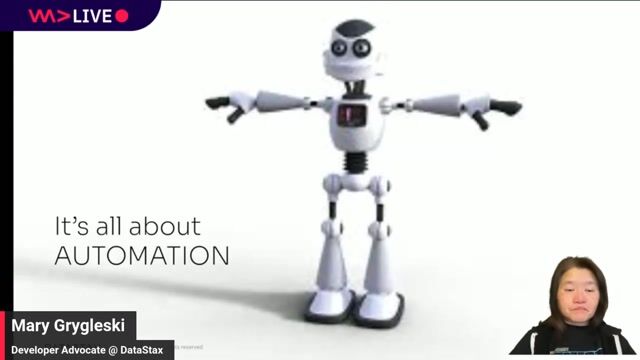Jodie Burchell
A beginner’s guide to modern natural language processing
#1about 5 minutes
Understanding the core challenge of natural language processing
Machine learning models require numerical inputs, so raw text must be converted into a numerical format called a vector or text embedding.
#2about 6 minutes
Exploring bag-of-words methods for text vectorization
Binary and count vectorization create features based on the presence or frequency of words in a document, ignoring their original context.
#3about 4 minutes
How Word2Vec captures word meaning in vector space
The Word2Vec model learns numerical representations for words by analyzing their surrounding context, grouping similar words closer together in a multi-dimensional space.
#4about 5 minutes
Training a Word2Vec model in Python using Gensim
A practical demonstration shows how to clean text data and train a custom Word2Vec model to generate embeddings for a specific vocabulary.
#5about 3 minutes
Creating document embeddings by averaging word vectors
A simple yet effective method to represent an entire document is to retrieve the embedding for each word and calculate their average vector.
#6about 2 minutes
Evaluating the performance of the Word2Vec classifier
The classifier trained on averaged word embeddings achieves 95% accuracy, with errors often occurring on headlines with misleading topics or tones.
#7about 3 minutes
Overcoming context limitations with transformer models
Transformer models use a self-attention mechanism to weigh the importance of other words in a sentence, allowing them to understand a word's meaning in its specific context.
#8about 5 minutes
Understanding how the BERT model is pre-trained
BERT learns a deep understanding of language by being pre-trained on tasks like predicting masked words and determining correct sentence order, enabling it to be fine-tuned for specific applications.
#9about 7 minutes
Fine-tuning a BERT model with the Transformers library
Using the Hugging Face Transformers library, a pre-trained DistilBERT model is fine-tuned for the clickbait classification task, requiring specific tokenization with attention masks.
#10about 2 minutes
Choosing the right text processing model for your task
While the fine-tuned BERT model achieves the highest accuracy at 99%, simpler methods like count vectorization can outperform Word2Vec and may be sufficient depending on the use case.
#11about 2 minutes
Using word embeddings to improve downstream NLP tasks
Word embeddings can be combined with other techniques, such as TF-IDF weighting, to extract more signal and improve performance on tasks like sentiment analysis.
#12about 2 minutes
Addressing overfitting and feature leakage in production
Preventing overfitting involves using validation sets, ensuring representative data samples, and checking for feature leakage where a feature inadvertently reveals the outcome.
#13about 2 minutes
Handling out-of-vocabulary and rare terms in NLP
For rare or out-of-vocabulary terms that models struggle with, symbolic rule-based approaches can be used as a complementary system to handle important edge cases.
#14about 3 minutes
Advice for starting a career in data science
Aspiring data scientists should focus on gaining hands-on experience with real-world datasets and building a portfolio of projects to develop an intuition for common issues.
Related jobs
Jobs that call for the skills explored in this talk.
Matching moments
Featured Partners
Related Videos
 47:28
47:28What do language models really learn
Tanmay Bakshi
 56:55
56:55Multimodal Generative AI Demystified
Ekaterina Sirazitdinova
 57:52
57:52Develop AI-powered Applications with OpenAI Embeddings and Azure Search
Rainer Stropek
 52:37
52:37Multilingual NLP pipeline up and running from scratch
Kateryna Hrytsaienko
 29:40
29:40Lies, Damned Lies and Large Language Models
Jodie Burchell
 59:38
59:38What comes after ChatGPT? Vector Databases - the Simple and powerful future of ML?
Erik Bamberg
 57:49
57:49Vectorize all the things! Using linear algebra and NumPy to make your Python code lightning fast.
Jodie Burchell
 1:00:56
1:00:56Enter the Brave New World of GenAI with Vector Search
Mary Grygleski
Related Articles
View all articles



From learning to earning
Jobs that call for the skills explored in this talk.

Forschungszentrum Jülich GmbH
Jülich, Germany
Intermediate
Senior
Linux
Docker
AI Frameworks
Machine Learning

Wilken GmbH
Ulm, Germany
Senior
Kubernetes
AI Frameworks
GitHub Copilot
Anthropic Claude
Cloud (AWS/Google/Azure)

Startup
Charing Cross, United Kingdom
PyTorch
Machine Learning

autonomous-teaming
Berlin, Germany
Remote
ETL
NoSQL
NumPy
Python
+3

Tecdata
Barcelona, Spain
Intermediate
Machine Learning
Amazon Web Services (AWS)

London School of Economics and Political Science
Charing Cross, United Kingdom
£53-62K
Data analysis

FRG Technology Consulting
Intermediate
Azure
Python
Machine Learning

Openai Global Partner
Charing Cross, United Kingdom
£80-140K
Senior
API
Azure
Python
JavaScript
+4

Jack & Jill\u002FExternal ATS
Charing Cross, United Kingdom
Python
PyTorch
TensorFlow
Machine Learning